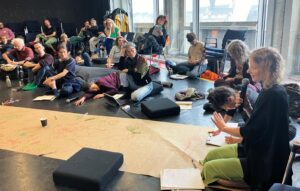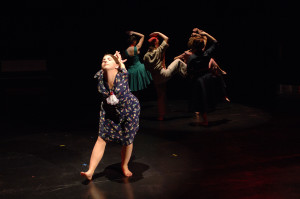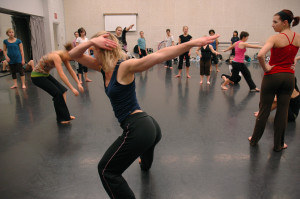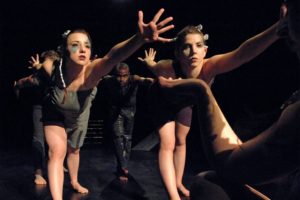As an artist, scholar, and educator, I have found that art, and dance in particular, plays a vital role in today’s world. As cultural practices intersect and embodied relationships change – often due to technological, political, and environmental impacts – the arts must be prepared to model flexible, humble and caring interactions with a multitude of places and peoples. Such flexibility is exactly what a quality dance education can offer. Dance, in all its various forms and manifestations, has a remarkable capacity to teach participants about cultural and environmental transformation over time and across space. Encountering such transformation through movement offers students new avenues of access, kinaesthetic as well as intellectual. As students of dance both embody and critically consider these issues, they garner deeper understanding of both people and place, a key step for understanding cultural and ecological intersections on a transnational and globalized scale.
Teaching
Kloetzel is currently professor of dance at the University of Calgary. She has been a faculty member or guest taught at numerous academic settings including Idaho State University, University of Montana, University of Glasgow, University of California, Riverside, University of Exeter and Swarthmore College, among others, as well as through various professional and community settings.
Teaching and Workshop Philosophy
To attain such knowledge, I move students readily between studio and classroom settings, breaking these instructional frames and encouraging students to approach dance from a kinaesthetic, relational, theoretical and, importantly, decolonial perspective. Using practice-based research methodologies in dialogue with critical race theory and Indigenous concepts of reciprocity and accountability, participants begin to recognize their creative practices as research endeavors that do not function in a vacuum, but rather as fully integrated into a culture and environment. As students cultivate their critical thinking skills and powers of observation alongside their physical prowess and compositional creativity, they can develop into individuals who can navigate diverse cultural contexts from the local to the global, as well as contribute to these contexts in respectful, creative, and impactful ways.
Technique Class
Technique class plays a significant role in this comprehensive education. I believe that students should aim to be as comfortable on their feet as on their hands, on the floor as in the air, with a partner as by themselves. To accomplish this, my modern/contemporary technique class borrows from the concept of six-limbed dancing to facilitate a dancer’s ability to move into and out of the floor with ease, relate to gravity in multiple ways, and exchange weight between the floor and all body parts. I rely heavily on momentum, core alignment, and head-tail initiation points (the 5th and 6th ‘limbs’) while also cultivating strength and flexibility. Drawing from my background in release technique, contact improvisation, yoga, gymnastics, ballet, Cunningham, and Alexander technique, I further students’ physical awareness in an atmosphere of fun and focused learning. In particular, I encourage students to work on self-perception as well as expanding their connection to others and to their surroundings. A focus that extends towards the minute attention to detail as well as towards the function of movement in the world at large allows students to see dance in all its depth and significance.








